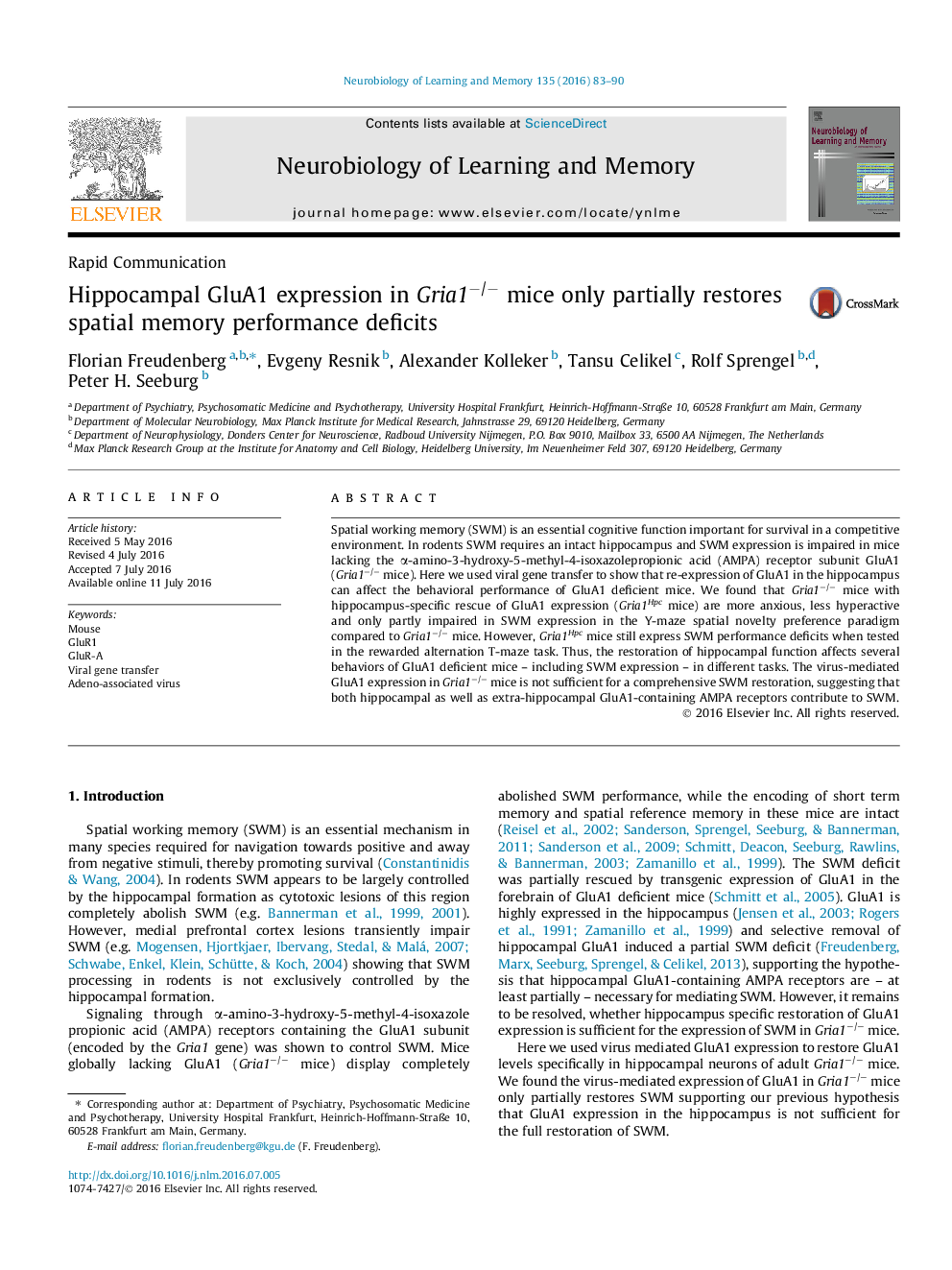| Article ID | Journal | Published Year | Pages | File Type |
|---|---|---|---|---|
| 5043356 | Neurobiology of Learning and Memory | 2016 | 8 Pages |
â¢Replicated hyperactivity and impaired spatial working memory (SWM) in Gria1â/â mice.â¢Hyperactivity in Gria1â/â mice was rescued upon hippocampal re-expression of Gria1.â¢Increased anxiety upon recovery of hippocampal GluA1 in Gria1â/â mice.â¢SWM is partially rescued in Gria1â/â mice with hippocampal Gria1 expression.
Spatial working memory (SWM) is an essential cognitive function important for survival in a competitive environment. In rodents SWM requires an intact hippocampus and SWM expression is impaired in mice lacking the α-amino-3-hydroxy-5-methyl-4-isoxazolepropionic acid (AMPA) receptor subunit GluA1 (Gria1â/â mice). Here we used viral gene transfer to show that re-expression of GluA1 in the hippocampus can affect the behavioral performance of GluA1 deficient mice. We found that Gria1â/â mice with hippocampus-specific rescue of GluA1 expression (Gria1Hpc mice) are more anxious, less hyperactive and only partly impaired in SWM expression in the Y-maze spatial novelty preference paradigm compared to Gria1â/â mice. However, Gria1Hpc mice still express SWM performance deficits when tested in the rewarded alternation T-maze task. Thus, the restoration of hippocampal function affects several behaviors of GluA1 deficient mice - including SWM expression - in different tasks. The virus-mediated GluA1 expression in Gria1â/â mice is not sufficient for a comprehensive SWM restoration, suggesting that both hippocampal as well as extra-hippocampal GluA1-containing AMPA receptors contribute to SWM.
Graphical abstractDownload high-res image (191KB)Download full-size image
